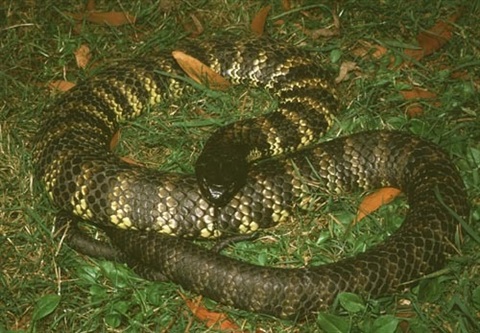Snakes

Tasmania has three venomous snake species:
- Tiger Snake: Known for its banding, often near water, highly venomous but avoids humans.
- Lowland Copperhead: Dark with a copper tint, prefers wetlands, venomous but reclusive.
- White-lipped Snake: Smallest, gray to olive with a pale lip line, found in cooler areas, venomous but low risk to humans.
All three species are protected under Tasmanian law and play a key role in maintaining ecological balance by controlling small animal populations. It is illegal to harm or kill them, and they pose little threat if left undisturbed.
Give Them Space: Snakes are generally shy and will move away if you keep a safe distance.
More information about living with snakes can be found on the Department of Natural Resources and Environment Tasmania website.
Council does not provide snake capture or removal services. If you are concerned and need assistance relocating a snake from your property, please contact Scott from NW Snake Catchers on 0488 929 761, scotty14@Live.com.au
Keep an eye on the snake from a safe distance to help the catcher locate it easily.
Are you interested in completing a venomous snake handling course? Whether you would like to tick it off your bucket list or learn a bit more about our native Tasmanian reptiles call Scott from NW Snake Catchers above.
As spring arrives in Tasmania, snakes will emerge from their winter torpor. Here are some proactive tips to reduce the chance of a snake encounter:
- Declutter your home, availd cluttered entries, remove debris and rubbish to eliminate hiding spots.
- Maintain lawns and gardens by regularly mowing grass for better visibility.
- Store kids' toys and equipment after use, and check sandpits before play.
- Control rodents in and around your home, as they attract snakes.
- Place water containers at the edge of rural properties to deter snakes from approaching your house looking for water.
- Observe your pets for unusual behavior, which may indicate a snake nearby.
- Keep pets on a lead in bushy areas and while walking in long grass.
- Learn snake bite first aid and keep a kit handy; resources are available from St. John’s website.